Hypertufa pots are a fun DIY project for the garden.
The great thing about these planters is that the hypertufa is so much lighter than you would think by just glancing at them. So you get the look of stone without the weight of stone.
And they are perfect for your succulent gardens!
How To Make Hypertufa Planters
Supplies:
- Portland Cement
- Sphagnum Peat Moss
- Perlite or Vermiculite
- Water
- Non-Stick Cooking Spray (ie, Pam or generic equivalent)
- Large bucket or trough to mix your ingredients in
- Various plastic or cardboard containers to use as molds
- Rubber gloves
- Particle mask
- Safety glasses
Perlite and sphagnum peat moss can be found in the gardening section for approximately $5 a piece and bags of Portland cement can be purchased from the construction area of Home Depot.
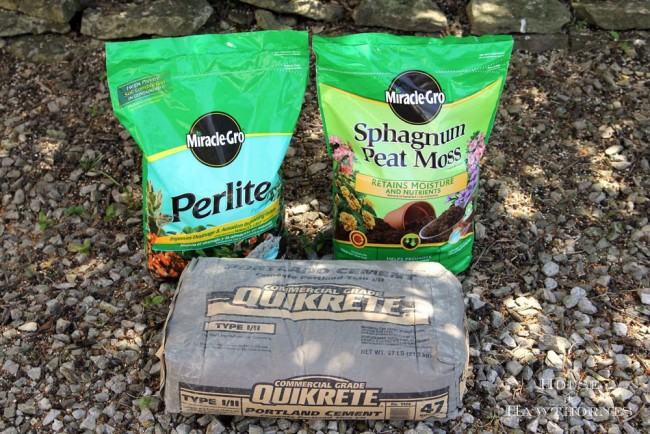
You do need Portland cement and not the quick drying cement for this recipe. Don't let the Quikrete name confuse you though.
Quikrete happens to make this Portland cement, although they do make the quick setting version of cement also. Just look for the Portland title (which has nothing to do with Portland, Oregon, BTW).
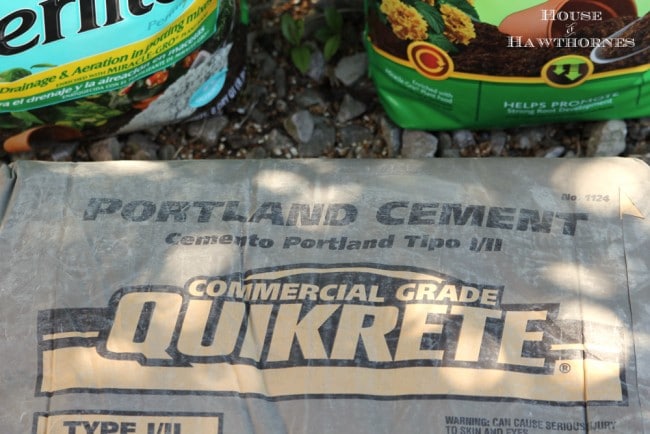
Instructions For Hypertufa Pots:
Gather some containers that you want to put the hypertufa into. You'll need an outer container and an inner container and the mixture will go between the two containers.
Some hypertufa mold ideas are two bowls of different sizes nested in one another,
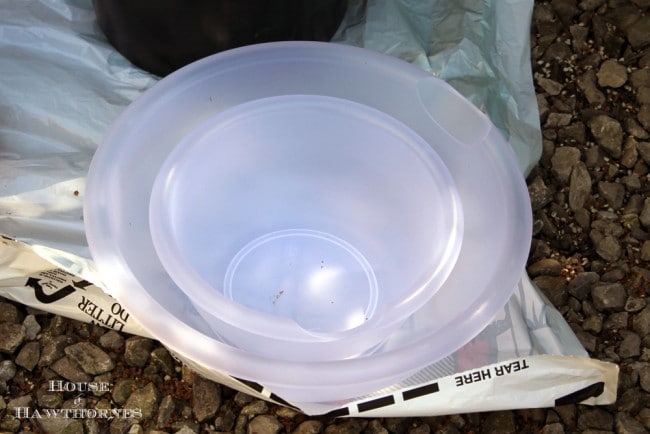
milk cartons, juice containers and fast food beverage cups.
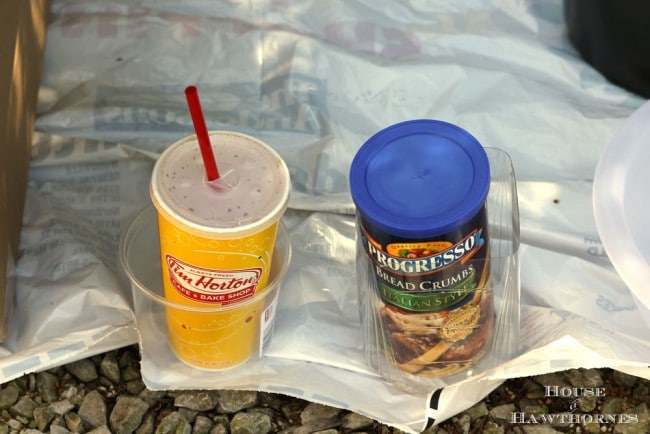
Even two boxes of different sizes can be used and are a great way to make trough type planters.
Spray the sides of the containers with cooking spray, so that the molds will slide out easily later. If you are going to use the cardboard boxes, use garbage bags to line them, so the moisture doesn't make the cardboard all mushy.
Get your containers ready and set to go before you start mixing the hypertufa. The containers must nest in each other, leaving at least ½ inch between the sides.
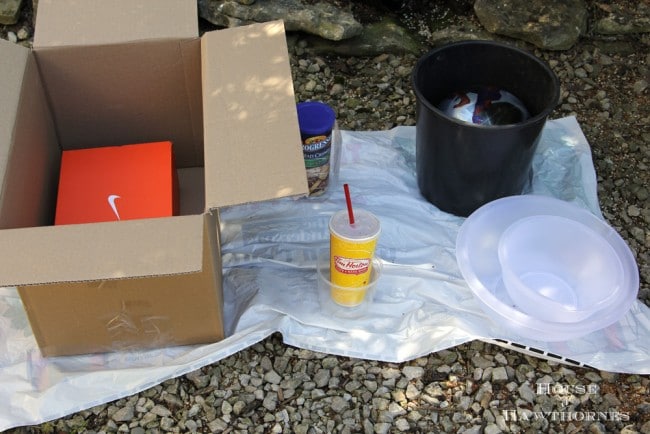
Don your particle mask, gloves and safety glasses and mix up your hypertufa.
Hypertufa Recipe
- 1 part Portland Cement
- 1 part Sphagnum Peat Moss
- 1 part Perlite or Vermiculite
- 1 part Water (approx.)
This is a messy project. Please wear appropriate clothing and use items for mixing that you do not want to use again.
And please don't forget to wear a mask and gloves! You don't want to inhale cement unless you want rock hard lungs. And cement can be very caustic to your skin. I forgot my safety glasses, so I just shut my eyes while scooping out the dry cement, but I'm pretty sure that's about the same as closing your eyes while you're welding on the sun (I do not recommend the closing-the-eyes-method, just trying to be transparent in my stupidity/forgetfulness here).
I used a plastic cup I had on hand to scoop out about 8 cups each of the cement, peat moss and perlite into my large bucket for mixing. I then added enough water to make a cottage cheese like consistency (it won't be an exact 1 part ratio, but probably close). I would suggest adding the water slowly so you do not add too much though.
Now, I had planned on showing a ton of photos doing all these steps, but my gloved hands were wet with cement and I didn't want to get my camera all gritty. So I am attaching a Youtube video from Lowes on how to make them which will give you a visual of how to mix it up.
When it's all nice and mixed together, press the mixture into the bottom of the outer container to a depth of about 1" (this will make the bottom), put the inner container on top of that and press more mixture into the sides.
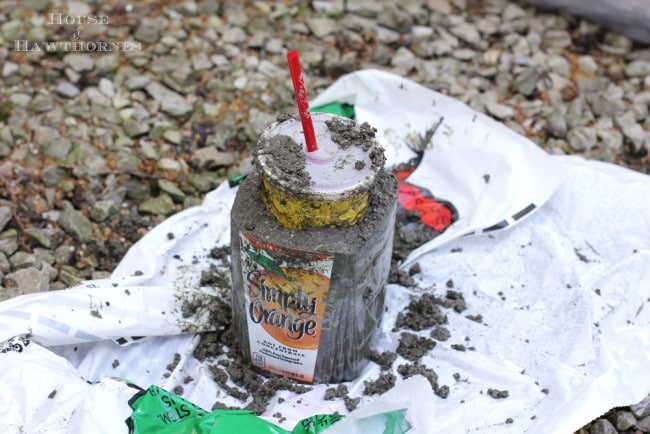
Wrap your items in a large plastic garbage bag and learn how to be patient.
Concrete needs to dry slowly, so keep it in the bag for roughly 24 hours. After 24 hours you can check and see if it's setting up. If so, you can remove the molds and let the piece air dry for a few more days (don't forget to wear your gloves for this step).
I found it took mine at least 4 days to completely and thoroughly dry.
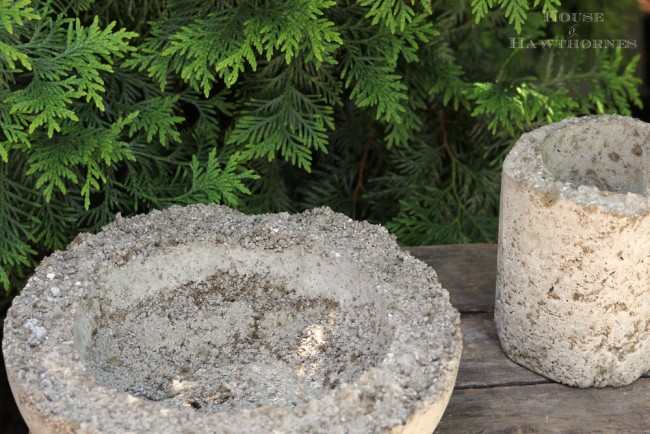
If you want the top rim of your hypertufa pot to be smooth, make sure you fill it to the very top and level it off with a ruler when filling the container.
I was going for a more rustic look for mine, so I did not fill the container completely nor did I level it off.
I also made a hypertufa sphere using a child's play ball.
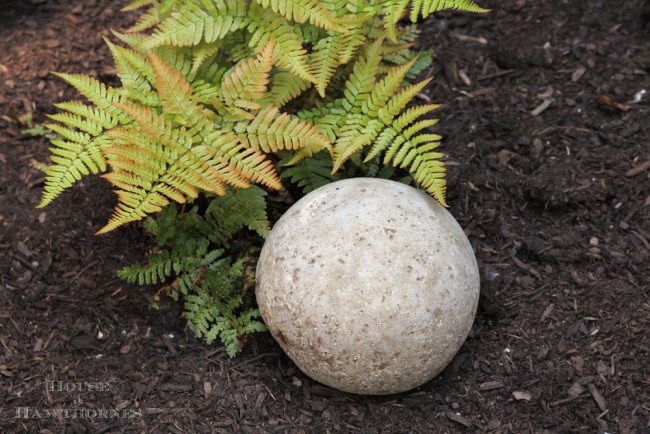
I partially filled a bucket with sand and placed my ball on top of the sand. The sand allows the ball to hold its shape and not have a huge flat spot on the bottom from the weight of the hypertufa.
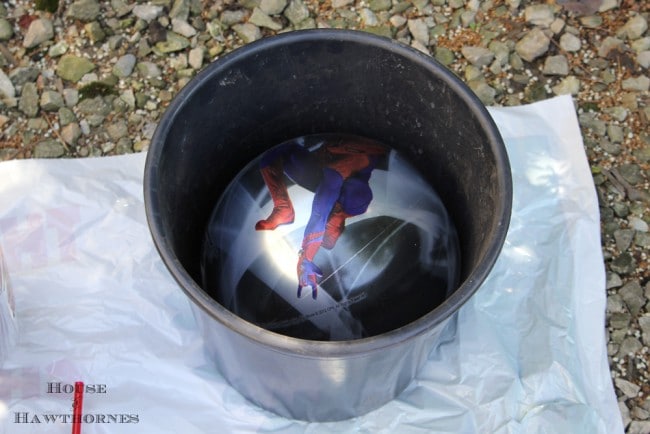
Then I cut a small hole in the top of the ball and filled it up with the hypertufa mix. I peeled the ball away when it had set up, which was approximately 48 hours later.
I also tried to do a hand with the stuff, using a rubber glove as a form.
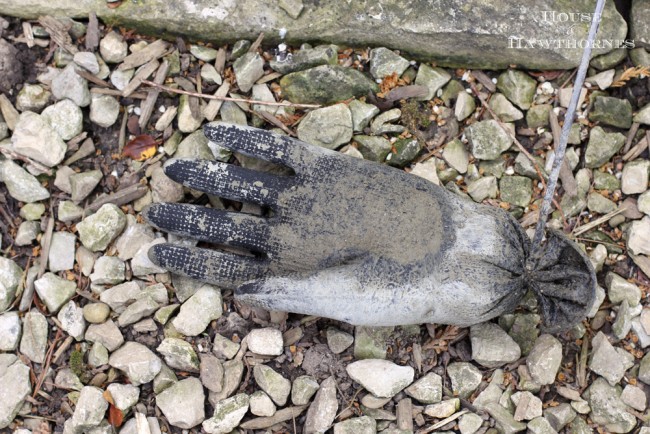
I lost a few fingers though. They popped off when I was cutting the glove off.

UPDATE: Since this post first appeared, I have successfully created a hand! OK, that vaguely sounds like something Dr. Frankenstein would say, but you can see it on this post - Hypertufa Hand Planters.
So if you want the look of a cement planter try your hand at hypertufa. It's cement without all the weight!
You may also enjoy:
Homemade Squirrel Repellent Recipe
How To Identify And Treat Poison Ivy



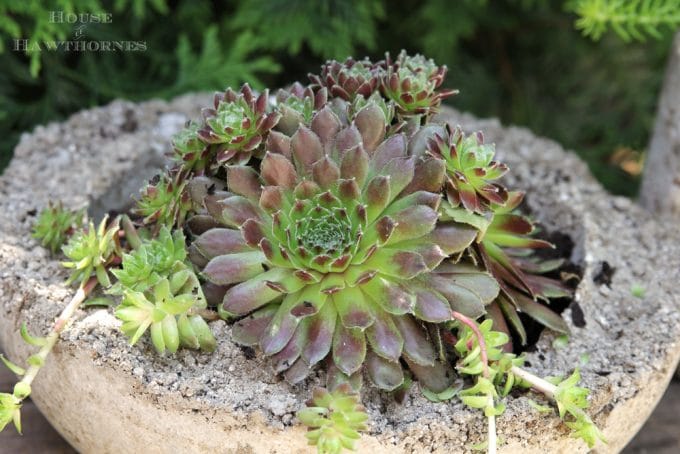
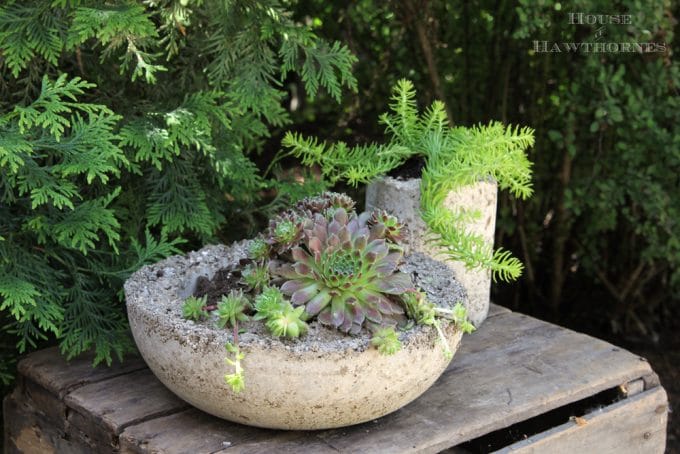

Lisa S
Thank you so much for sharing your process and especially the picture of exactly which type of cement to use! I have read many articles about this and so far you are the only one to specify the type of portland cement, their are several. I am now ready to give this a try!
Diana Diehl
Oh, and this looks like a GREAT way to make plant stands, especially using the nested boxes! Just turn them upside down when complete.
Diana Diehl
I love this idea and want to try it. I have a couple of questions:
* I am curious about the durability of these containers. I know that concrete buildings are eroding due to the steel and iron rebar rusting. So wouldn't the sphagnum break down over a short period of time and make this crumble? What is the longest you've had these?
* Approximately what did that bowl weigh? The weight would help me determine if I could handle one of these and should try the project..
Pam
I still have these same planters and have used them every year since I made them in 2012. I have dirt and a plant in the bowl right now, so that would throw the weight off, but I would say when empty it probably weighs 5 pounds (bag of sugar?). They are so much lighter than if you would make them with just cement.
So far no crumbling. One thing to mention though, I live in Ohio where we have a deep freeze in the winter, so I take these into my garage in the winter. I'm not sure they would do as well if they were constantly freezing and thawing during the winter.
Wildrose
Awesome!!!
Love the look, but could never pick one up.
Have to try it.
Gayle Windham
Cool idea. Thank you
Margo Bergene
If you want holes in the bottom of the containers, put something like a chunck of styrofoam or a wood dowel in then when it cures drill out the wood, no need for fancy drill bits or crape out with a knife. I was also thinking a fat straw or a throw away chop stick would hold the spot. If you don't seal the pots the water will leach out, if you paint and/or seal them then a drain hole would be a good idea.
Margo Bergene
sorry I misspelled a few chunck should be chunk, crape should be scrape.
JuneF
This is awesome! I won't get to make hypertufta this Spring, but next.......I can hardly wait!
Carmen
I tried this using a different recipe and it was a complete bust! (No pun intended...) I am determined to make this work. (!!!)
Anonymous
Isn't Spam a meat product? I think you mean PAM, Pam.....and I can't believe I am the first person to spot that, but I didn't read ALL the posts. BTW, love your sense of humor and your projects.
ChiWei @ One Dog Woof
This is so cool Pam! I love that you can use whatever it is around the house to make these. Great job!